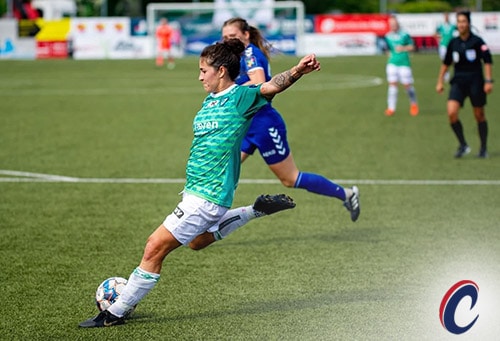Soccer, also known as fútbol (the original football), is a beautiful sport adored and played around the world. It is a predominantly lower-extremity sport, requiring speed, endurance, strength, and agility. Unfortunately, the nature of the game predisposes athletes to a variety of lower-extremity injuries, one of the most common being the hamstring strain.
Soccer is a game of acceleration and deceleration. To understand how acceleration and deceleration relate to hamstring injuries, one must understand the difference between concentric and eccentric muscle contractions. A concentric muscle contraction is when a muscle exerts force while shortening. On the other hand, an eccentric muscle contraction is when a muscle exerts force as it lengthens. For example, a bicep curl requires a concentric bicep contraction to get the weight up, but then requires an eccentric contraction to lower the weight back down.
 Now, biceps and curls don’t necessarily apply to soccer, so let’s look at the hamstrings as they relate to sprinting in soccer. The hamstrings are a key component in acceleration, but are put
Now, biceps and curls don’t necessarily apply to soccer, so let’s look at the hamstrings as they relate to sprinting in soccer. The hamstrings are a key component in acceleration, but are put
under the most stress during deceleration. Not only are they responsible for stopping a player’s entire body weight, but the full force of momentum behind the athlete’s body weight. A strong eccentric contraction of the hamstrings occurs as the athlete breaks down after a sprint to decelerate to a full stop or change of direction. For this reason, it is vital to prepare the hamstrings to handle heavy eccentric loads to prevent hamstring strains, injuries that can plague a soccer athlete for the rest of their career.
Eccentric exercises help strengthen and stabilize the hamstrings, which not only protects the hamstrings themselves, but also the knees. Some of my favorites include Single and Double-Leg Romanian Deadlifts, Nordic Hamstring Curls (not for the faint-hearted), and Eccentric Bridges. These exercises allow the athlete to strengthen the hamstrings throughout their full range of motion. Furthermore, it is important to complement these eccentric exercises with mobility and flexibility work, focusing not only on the hamstrings, but also the glutes, hips, and ankles. Altogether, this regimen prepares an athlete’s lower extremity for the high-impact demands of competitive soccer, preventing injury and prolonging his/her career.
Bryce Gordon is a certified Athletic Trainer at Compete Sports Performance and Rehab in Orange County, CA.

